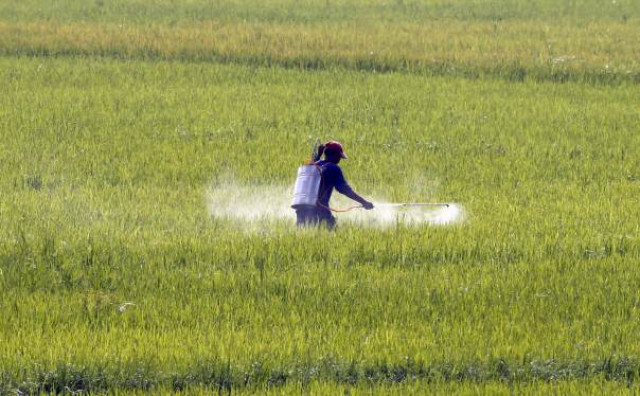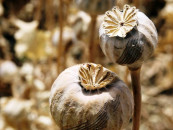Fertiliser sales down 20% year-on-year
Month-on-month sale rose 37% due to onset of Rabi season and subsidy package.

File Photo: A farmer sprays liquified fertilizer over a rice field.
PHOTO: REUTERS
However, sales improved by 37% compared to October 2017.
Urea sales jumped 60% month-on-month (MoM) to 602,000 tons, with Di-Ammonium Phosphate (DAP) sales also registering a growth of 30% MoM to 502,000 tons in November 2017.
Senate panel seeks details of all tax cases against fertiliser firm
Following its previous months’ performance of calendar year 2017 (CY17), fertiliser off-take remained promising in November 2017 as well driven by onset of Rabi season coupled with continued support from a subsidy package.
On cumulative basis, total sales posted an encouraging growth of 13% year-on-year to 8.84 million tons during the first 11 months of CY17 (11MCY17) where urea off-take posted a decent growth of 12% YoY to reach 5.14 million tons.
The ongoing Rabi season is expected to continue driving demand while international pricing dynamics (urea prices rebounded to $260 per ton, up 60% since a low of $163 per ton in June 2017) is also interesting. Moreover, normalisation of inventory level (urea inventory standing at 506,000 tons compared with 1.45 million tons in November 2016) is helping the industry, according to an AKD Research report.
Inventory levels under control
Higher demand on account of improved farm incomes along with export of urea and lower production from local players (down 6% year on year to 5.17 million tons in 11MCY17) has led to a significant drop in urea inventory towards the end of the year.
Iqbal laments lag in progress
Declining consistently every month, urea inventory now stands at just 506,000 tons (down 65% YoY and 27% MoM) in November 2017.
This is now equivalent to 1.1 times the one month average production of urea compared with last year’s average of 2.9 times. This is likely to ease down further given strong expected demand in Rabi season and lower production from local manufacturers in the winter season (curtailment in gas supply).
Published in The Express Tribune, December 29th, 2017.
Like Business on Facebook, follow @TribuneBiz on Twitter to stay informed and join in the conversation.


















COMMENTS
Comments are moderated and generally will be posted if they are on-topic and not abusive.
For more information, please see our Comments FAQ